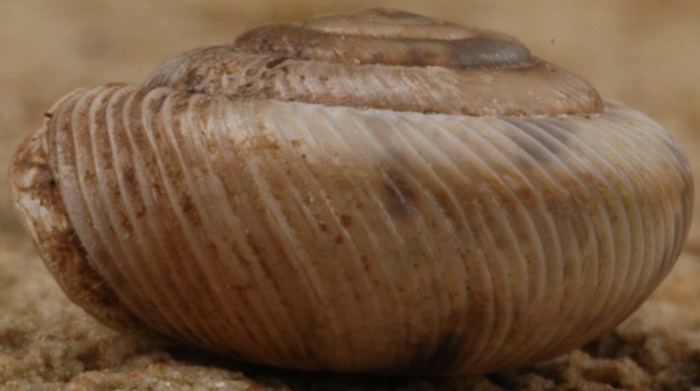
Adaptation
Mollusks contain a variety of organisms including a few different
classes such as Bivalvia, Cephalopoda, and Gastropoda
(Gillis, 2012). Gastropoda, being the class of Millerelix gracilis, includes snails,
whelks, abalone, conchs, slugs, and nudibranchs
(Gillis, 2012).
Noticing that many of these organisms are marine/ fresh water
species, it is important to note that the land snail at one point
evolved from full water submersion to a high and dry lifestyle on
land (The Living World of Molluscs, 2012). Therefore, some adaptations
that were made include the loss or decrement of gills, acquisition
of water retaining abilities, more complex sensory organs, and the
ability to move (The Living World of Molluscs,
2012).
A major adaptation previously mentioned on this site is called
torsion. Torsion is a process in development where the anus of the
animal’s body is twisted from the back of the animal to the front,
resulting in the anus being above the head region
(Hickman et. al.,
2012). This internal arrangement is important because without it,
waste products would have passed over the gills
(Hickman et. al.,
2012). This concept is referred to as fouling
(Hickman et. al.,
2012).
 There is an interesting hypothesis about how torsion became a
developmental staple in gastropods (Chia and Pennington, 1985). It
is, that torsion was initially a form of defense in early gastropod
larval stages (Chia and Pennington, 1985). At some point in
evolution, a mutation then occurred which sealed this activity as an
actual developmental step (Chia and Pennington, 1985).
There is an interesting hypothesis about how torsion became a
developmental staple in gastropods (Chia and Pennington, 1985). It
is, that torsion was initially a form of defense in early gastropod
larval stages (Chia and Pennington, 1985). At some point in
evolution, a mutation then occurred which sealed this activity as an
actual developmental step (Chia and Pennington, 1985).
Millerelix
shell (Image by
Dan Johnson)
Returning to the loss of the gill, it is thought to be partially due
to coiling (Hickman et. al., 2012). The evolution of the shell
changed from being bilaterally symmetrical to being a slanting,
upward spiral (Hickman et. al. 2012). In this process, the weight
transfer from the shell, due to the tilted whorl, put more pressure
on one side of the body and its organs (Hickman et. al., 2012). Over
time, these organs lost function and presence in the body
(Hickman
et. al., 2012). Consequently, the mantle became the air-breathing
organ (Hickman et., al 2012).
By using the two pairs of tentacles, snails can sense and see their
environment (The Living World of Molluscs,
2012). They have a nervous
system consisting of nerve cords and nervous tissue with ganglia
which assist in sensory and nervous functions
(Gillis, 2012).
To remain moist, snails have adapted the ability to produce thick
mucus (Hickman et. al., 2012). This coat of mucous protects and
prevents the snail from drying (Hickman et. al., 2012). Snails tend
to hide in cooler, darker, more moist places when weather becomes
very hot and dry (The Living World of Molluscs,
2012).